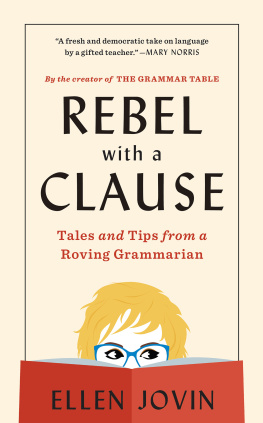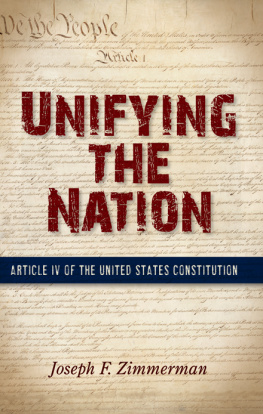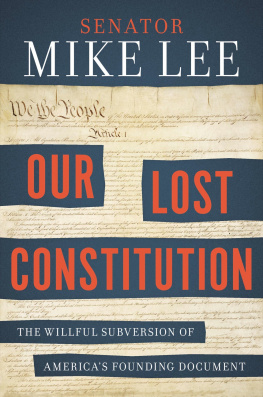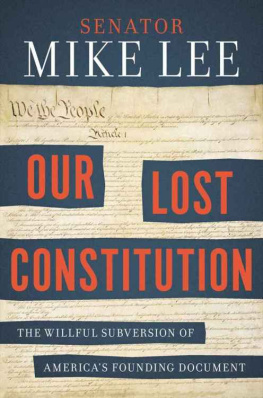Ray Raphael - The U.S. Constitution: Explained--Clause by Clause--for Every American Today
Here you can read online Ray Raphael - The U.S. Constitution: Explained--Clause by Clause--for Every American Today full text of the book (entire story) in english for free. Download pdf and epub, get meaning, cover and reviews about this ebook. year: 2017, publisher: Vintage, genre: Politics. Description of the work, (preface) as well as reviews are available. Best literature library LitArk.com created for fans of good reading and offers a wide selection of genres:
Romance novel
Science fiction
Adventure
Detective
Science
History
Home and family
Prose
Art
Politics
Computer
Non-fiction
Religion
Business
Children
Humor
Choose a favorite category and find really read worthwhile books. Enjoy immersion in the world of imagination, feel the emotions of the characters or learn something new for yourself, make an fascinating discovery.

- Book:The U.S. Constitution: Explained--Clause by Clause--for Every American Today
- Author:
- Publisher:Vintage
- Genre:
- Year:2017
- Rating:5 / 5
- Favourites:Add to favourites
- Your mark:
- 100
- 1
- 2
- 3
- 4
- 5
The U.S. Constitution: Explained--Clause by Clause--for Every American Today: summary, description and annotation
We offer to read an annotation, description, summary or preface (depends on what the author of the book "The U.S. Constitution: Explained--Clause by Clause--for Every American Today" wrote himself). If you haven't found the necessary information about the book — write in the comments, we will try to find it.
The U.S. Constitution: Explained--Clause by Clause--for Every American Today — read online for free the complete book (whole text) full work
Below is the text of the book, divided by pages. System saving the place of the last page read, allows you to conveniently read the book "The U.S. Constitution: Explained--Clause by Clause--for Every American Today" online for free, without having to search again every time where you left off. Put a bookmark, and you can go to the page where you finished reading at any time.
Font size:
Interval:
Bookmark:
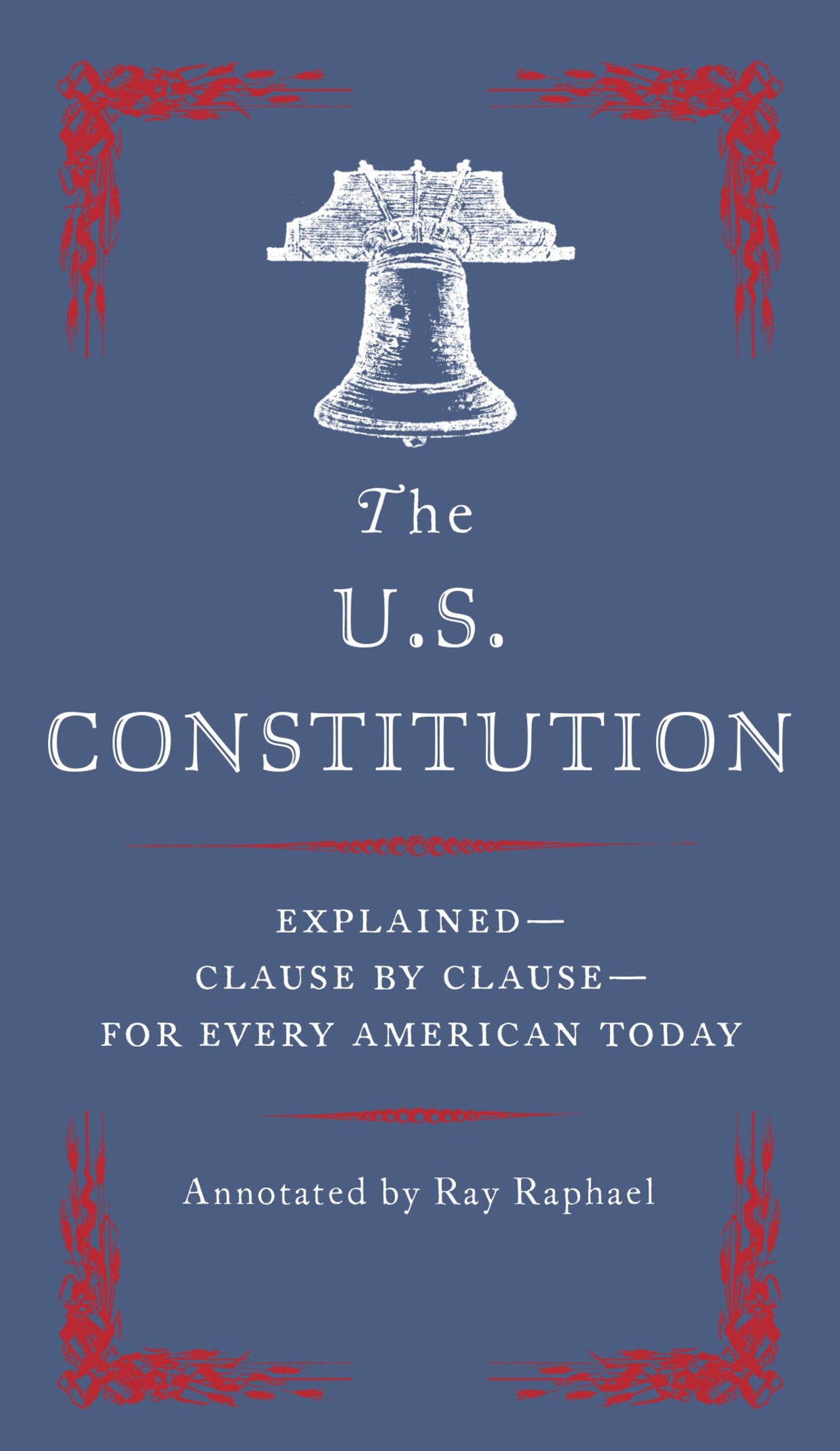
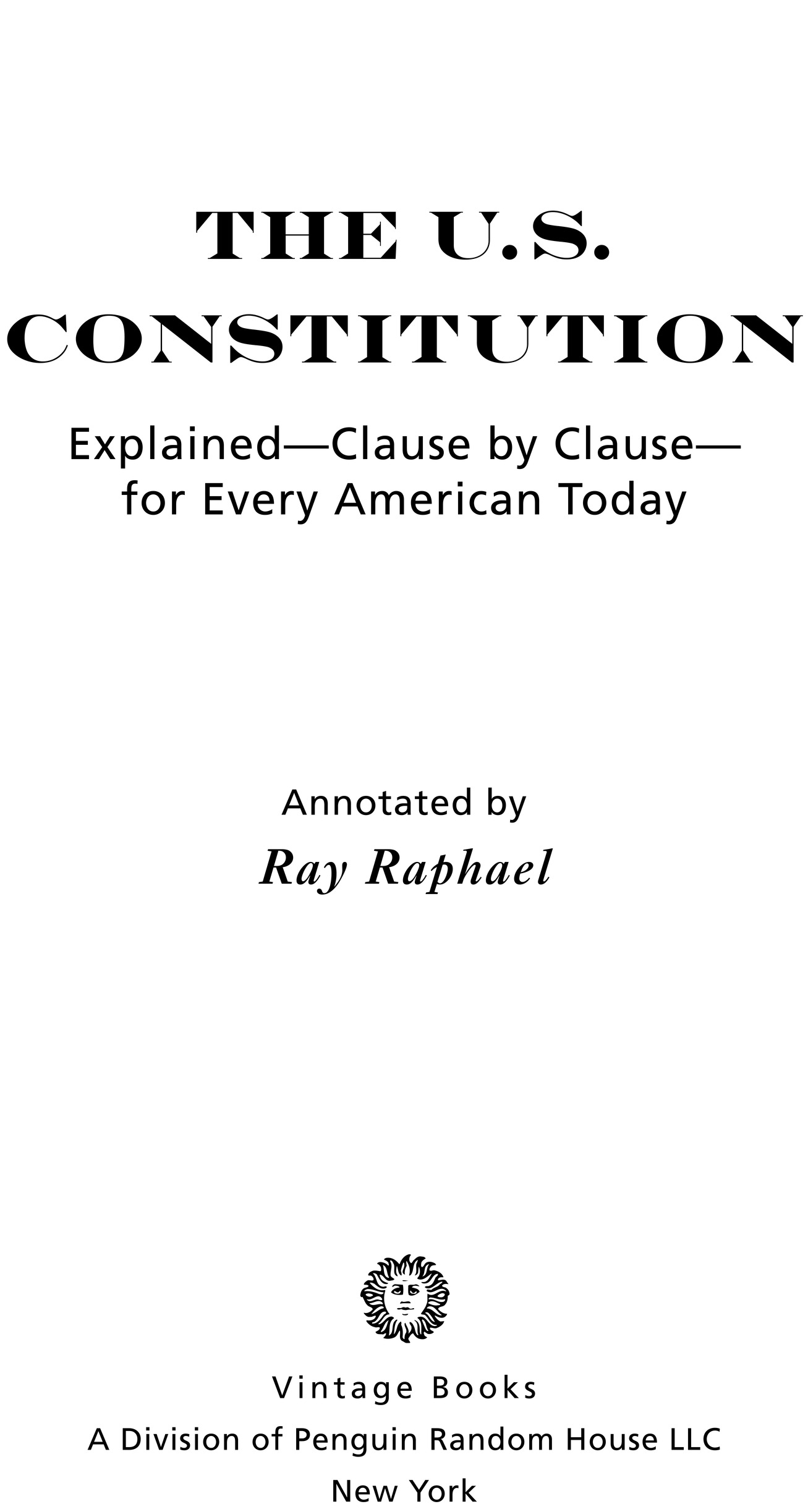
FIRST VINTAGE BOOKS EDITION, OCTOBER 2017
Copyright 2016, 2017 by Ray Raphael
All rights reserved. Published in the United States by Vintage Books, a division of Penguin Random House LLC, New York, and distributed in Canada by Random House of Canada, a division of Penguin Random House Canada Limited, Toronto. Originally published in slightly different form as an original eShort by Vintage Books, a division of Penguin Random House LLC, New York, in 2016.
Vintage and colophon are registered trademarks of Penguin Random House LLC.
Library of Congress Cataloging-in-Publication Data
Names: Raphael, Ray, author.
Title: The U.S. Constitution : explainedclause by clausefor every American today / Ray Raphael.
Other titles: United States Constitution | U.S. Constitution
Description: First Vintage Books Edition. | New York : Vintage, 2017.
Identifiers: LCCN 2017036856 (print) | LCCN 2017037260 (ebook) | ISBN 9780525562542 (paperback) | ISBN 9780525562917 (ebook)
Subjects: LCSH: United States. Constitution. | Constitutional lawUnited States. | BISAC: LAW / Constitutional. | HISTORY / United States / Revolutionary Period (17751800).
Classification: LCC KF4550.R37 2017 (print) | LCC KF4550 (ebook) | DDC 342.7302dc23
LC record available at https://lccn.loc.gov/2017036856
Vintage Books Trade Paperback ISBN9780525562542
Ebook ISBN9780525562917
Cover design by Perry De La Vega
Cover illustration (detail): Revere and Son Bell and Cannon Foundry advertisement that appeared in the Massachusetts Spy, October 28, 1807/Collection, Paul Revere Memorial Association
www.vintagebooks.com
v4.1
ep
In the United States, the Constitutionnot the president, nor any elected leaderreigns supreme. Article VI declares succinctly: This Constitution, and the Laws of the United States which shall be made in Pursuance thereof,shall be the supreme Law of the Land. Americans for more than two centuries have treated the primacy of the Constitution as gospel, and that is no small part of our endurance as a nation. Regime change in the United States proceeds peacefully. One president passes the torch to the next, even if the two belong to opposing political parties. Representatives and senators come and go, but the Constitution provides the framework under which they all must govern.
Yet the passage of time does present interpretive problems. We have agreed to abide by rules developed in a very different age. If we are to understand the historical Constitution and allow it to guide us today, we need to take account of the differences between then and now.
The framers concerns were not identical to ours. The Constitution stipulates that Congress has the authority to grant Letters of Marque and Reprisal and punish Piracies and Felonies committed on the high seas, but we worry more about terrorists on airplanes than pirates on the high seas. How can we balance airport security with privacy concerns? It would be odd to treat the framers as experts in such matters. We might look to basic principles that they espoused, but the devil is in the details and details are markedly absent.
Textual interpretation of the Constitution must account for the evolution of language. Article VI guarantees that the federal government will protect against domestic Violence. Today the term refers to spousal abuse, but back then it meant civil unrest. Constitutionese is not our native tongue.
To grasp the context in which our Constitution was drafted, imagine that it is the spring of 1787. Under the Articles of Confederation, Congress depends on the states for funds, but from October 1786 through March 1787, the states have paid a grand total of $663 into the federal treasury. To use a modern idiom, the federal government has shrunk to the size where it can drown in a bathtub. Penniless and powerless, Congress cannot even muster a quorum.
The state of Massachusetts has asked Congress to suppress a rebellion (domestic Violence) of indebted farmers who are closing the courts, but there is no federal army to speak of, only a few hundred soldiers stationed in western forts. Debtors are closing courts in South Carolina, Virginia, Maryland, and New Jersey as well. In Pennsylvania, farmers are preventing tax collectors from seizing their cattle. The Rhode Island legislature, under the sway of debtors, has just issued paper money. New York, North Carolina, and Georgia are now debating whether to follow Rhode Islands lead. All of this is destroying public credit. With the value of money plummeting, neither Congress nor the states can find willing lenders.
What is to be done? Obviously, the Articles of Confederationthe nations existing constitutionneed to be fixed. Twelve states (but not Rhode Island) send delegates to a convention in Philadelphia for the sole and express purpose of revising the Articles of Confederation to render the federal constitution adequate to the exigencies of Government & the preservation of the Union. But will revising the Articles suffice? That document requires unanimous approval for any amendments, a hurdle that has proved impossible to clear. Two amendments granting Congress the power to lay imposts have already failed.
On the first day of deliberations, Virginias Edmund Randolph and Pennsylvanias Gouverneur Morris move that instead of merely correcting and enlarging the Articles of Confederation, a national government ought to be established consisting of a supreme legislative, executive & judiciary. (James Madisons meticulous notes on the convention emphasized the words national and supreme.) Would delegates vote for it despite their instructions only to revise the Articles of Confederation?
They did, and that was a defining moment. The framers wanted to create from scratch an energetic government with sufficient vigor (among their favorite words) to prevent the United States from collapsing as a nation. A writer in The Pennsylvania Gazette put it this way: The Year 1776 is celebrated for a revolution in favor of Liberty. The year 1787, it is expected, will be celebrated with equal joy, for a revolution in favor of Government.
What would that government look like?
The framers wanted it to be robust yet not tyrannical. To balance strength and restraint, they created three distinct branches that could constrain one another. Separation of powers and checks and balances are often said to limit federal power, but in fact, they serve the opposite purpose. By distributing authority to different components within the federal government, the framers gave that government greater powers than it dared grant to a single body. As protections grew, they could add more powersthat was the framers basic strategy and crowning achievement.
The framers organized the Constitution around these centers of authority. Article I covers the legislative branch, Article II the executive branch, and Article III the judicial branch.
Article IV delineates the relationship among the states and between each state and the federal government.
Article V provides multiple methods for amending the Constitution. The fatal flaw of the Articles of Confederation was its inflexibility; requiring unanimity meant, in practice, that the Articles would never be amended. The framers knew their plan was not perfect and provided alternate routes, and a lower threshold, for amending it.
Font size:
Interval:
Bookmark:
Similar books «The U.S. Constitution: Explained--Clause by Clause--for Every American Today»
Look at similar books to The U.S. Constitution: Explained--Clause by Clause--for Every American Today. We have selected literature similar in name and meaning in the hope of providing readers with more options to find new, interesting, not yet read works.
Discussion, reviews of the book The U.S. Constitution: Explained--Clause by Clause--for Every American Today and just readers' own opinions. Leave your comments, write what you think about the work, its meaning or the main characters. Specify what exactly you liked and what you didn't like, and why you think so.


